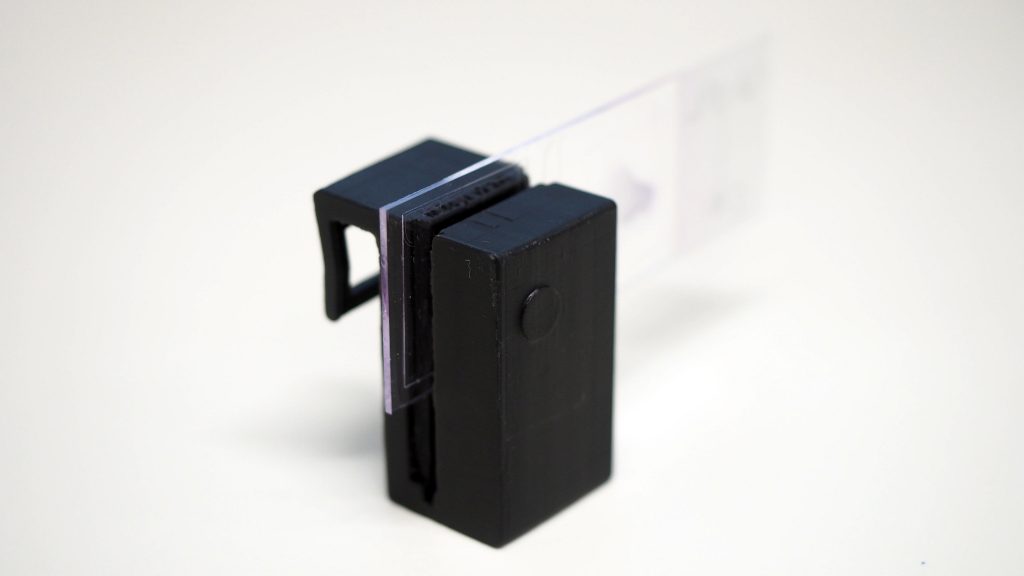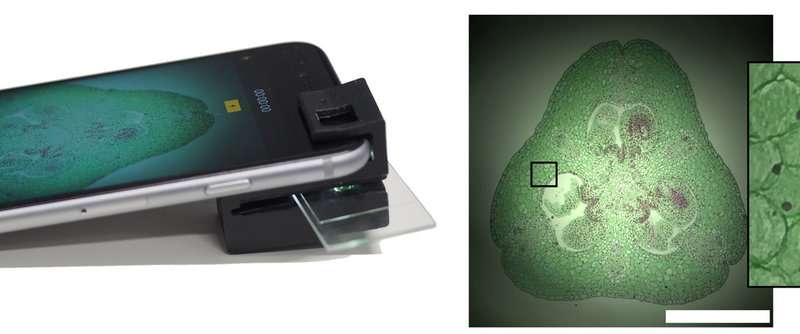Researchers from RMIT University in Australia recently implemented a 3D printable “clip-on” that allows people to turn their smartphone into a fully functional microscope.
Both the scientist and the curious can visualize specimens as small as 1/200th of a millimetre through the smartphone microscope. Those specimens comprise microscopic organisms, animal and plant cells, blood cells, cell nuclei and more.

The clip-on technology
Technically speaking, the clip-on has been made with internal illumination tunnels. Thanks to the tunnels, the light can easily find its way from the camera flash to the sample, addressing by this way the issues seen with other microscopy-enabled mobile phone devices.
“We’ve designed a simple mobile phone microscope that takes advantage of the integrated illumination available with nearly all smartphone cameras. Almost all other phone-based microscopes use externally powered light sources, while there’s a perfectly good flash on the phone itself”, said Lead developer and CNBP Research Fellow at RMIT, Dr Antony Orth explains.

Key advantages of the clip-on technology:
- The microscope can be used after one simple assembly step;
- It does not require any additional illumination optics;
- The device does not require any fundamental knowledge of 3D printing
- According to Dr. Oth, the clip-on enables both bright-field and dark-field microscopy techniques to be undertaken. “The added dark-field functionality lets us observe samples that are nearly invisible under conventional bright-field operation such as cells in media,” he says.
There is a wide range of applications for the clip-on technology: “water quality, blood samples, environmental observation, early disease detection and diagnosis.” During the test, the technology has proven itself in the visualization of samples of cell culture, and zooplankton.

The 3D printing file of the clip-on technology has been made publicly available.
For further information about 3D Printing, follow us on our social networks and subscribe to our newsletter!





